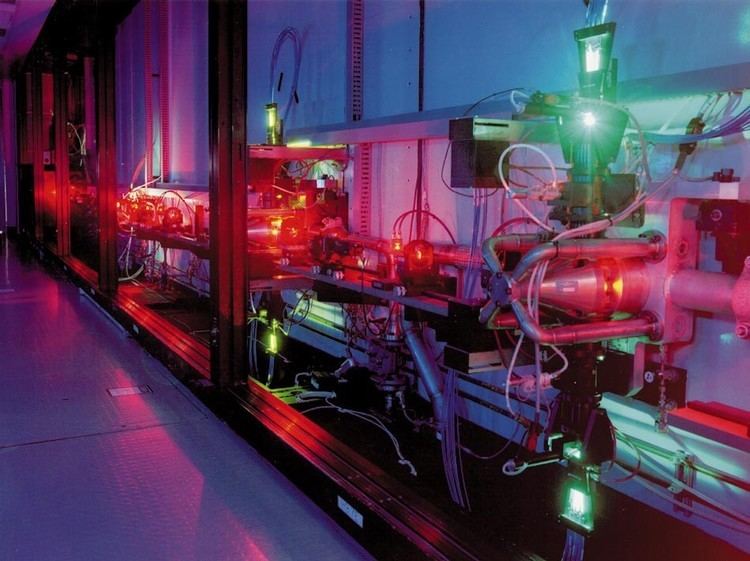 | ||
Atomic vapor laser isotope separation (AVLIS) is a method by which specially tuned lasers are used to separate isotopes of uranium using selective ionization of hyperfine transitions.
Contents
In the largest technology transfer in U.S. government history, in 1994 the AVLIS process was transferred to the United States Enrichment Corporation for commercialization. However, on June 9, 1999 after a $100 million investment, USEC cancelled its AVLIS program.
The AVLIS process provides high energy efficiency comparable with gas centrifuges, high separation factor, and low volume of radioactive waste.
AVLIS continues to be developed by some countries and it presents some specific challenges to international monitoring. Iran is now known to have had a secret AVLIS program. However, since it was uncovered in 2003, Iran has claimed to have dismantled it.
A similar technology, using molecules instead of atoms, is molecular laser isotope separation (MLIS).
Principle
The absorption lines of 235U and 238U differ slightly due to hyperfine structure; for example, the 238U absorption peak shifts from 502.74 nanometers to 502.73 nm in 235U. AVLIS uses tunable dye lasers, which can be precisely tuned, so that only 235U absorbs the photons and selectively undergoes excitation and then photoionization. The ions are then electrostatically deflected to a collector, while the neutral unwanted uranium-238 passes through.
The AVLIS system consists of a vaporizer and a collector, forming the separation system, and the laser system. The vaporizer produces a stream of pure gaseous uranium.
Laser excitation
The laser commonly used is a two-stage tunable pulsed dye laser usually pumped by a copper vapor laser; the master oscillator is tunable, narrow-linewidth, and highly precise. Its power is significantly increased by a dye laser amplifier acting as optical amplifier. Three frequencies ("colors") of lasers are used for full ionization of uranium-235.
For AVLIS in other elements, such as lithium, tunable narrow-linewidth diode lasers are used.
Brief history
The history of AVLIS, as recorded in the open refereed literature, began in the early-mid 1970s in the former Soviet Union and the United States. In the US, AVLIS research was mainly carried out at the Lawrence Livermore National Laboratory although some industrial laboratories were early players. Tunable laser development for AVLIS, applicable to uranium, has also been reported from several countries including Australia (1982-1984), France (1984), India (1994), and Japan (1996).
